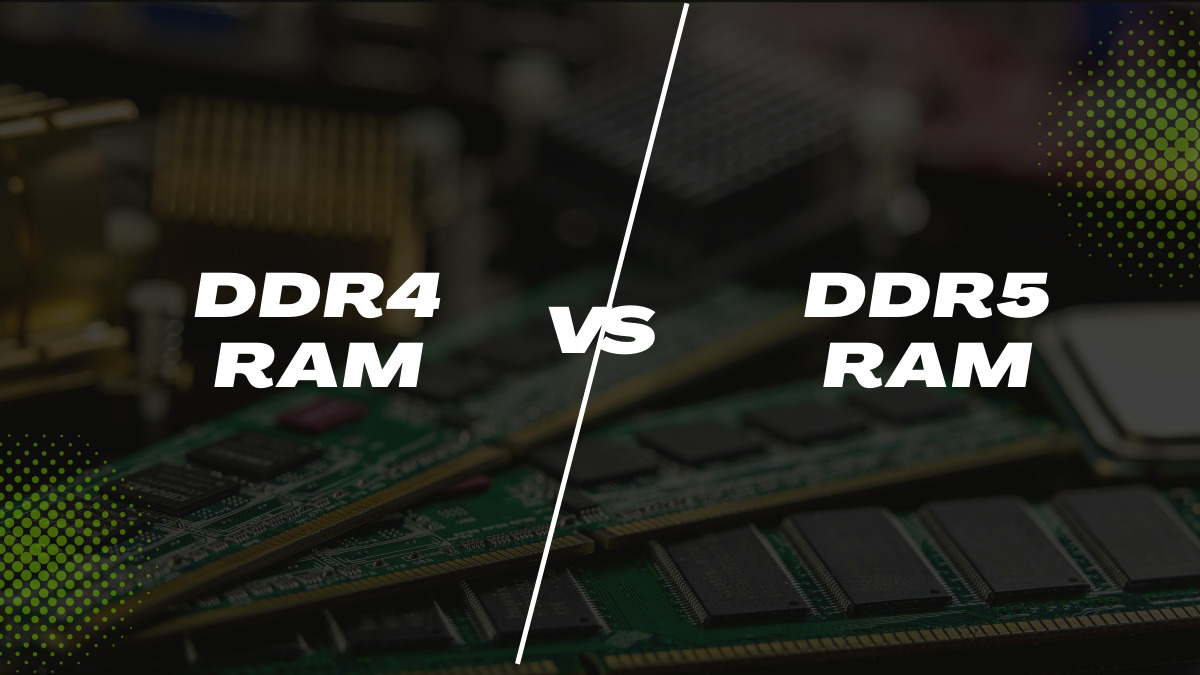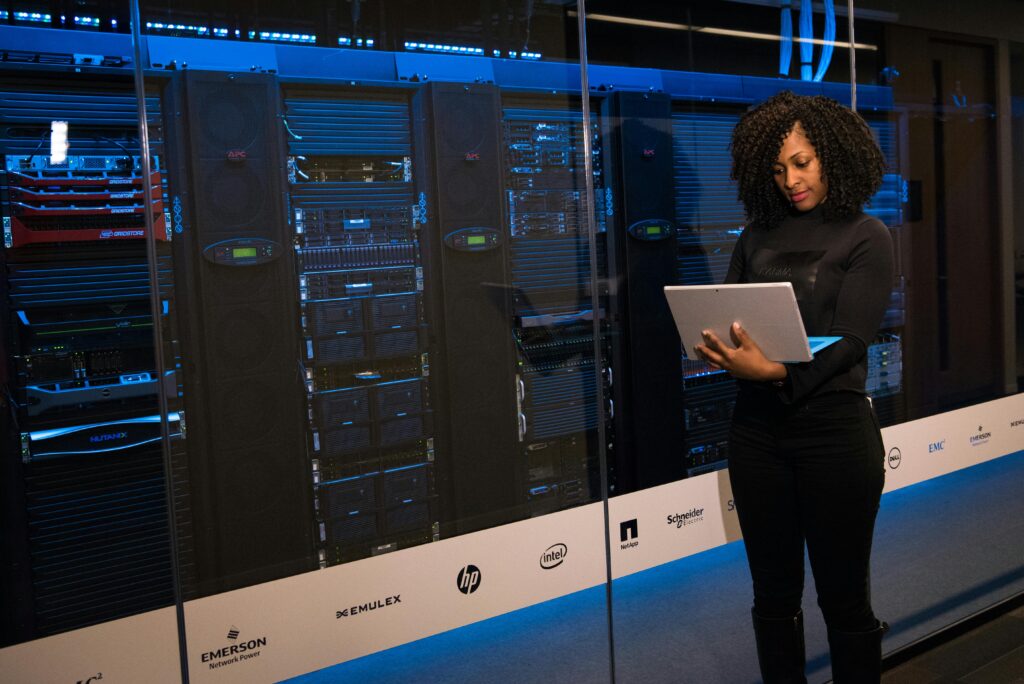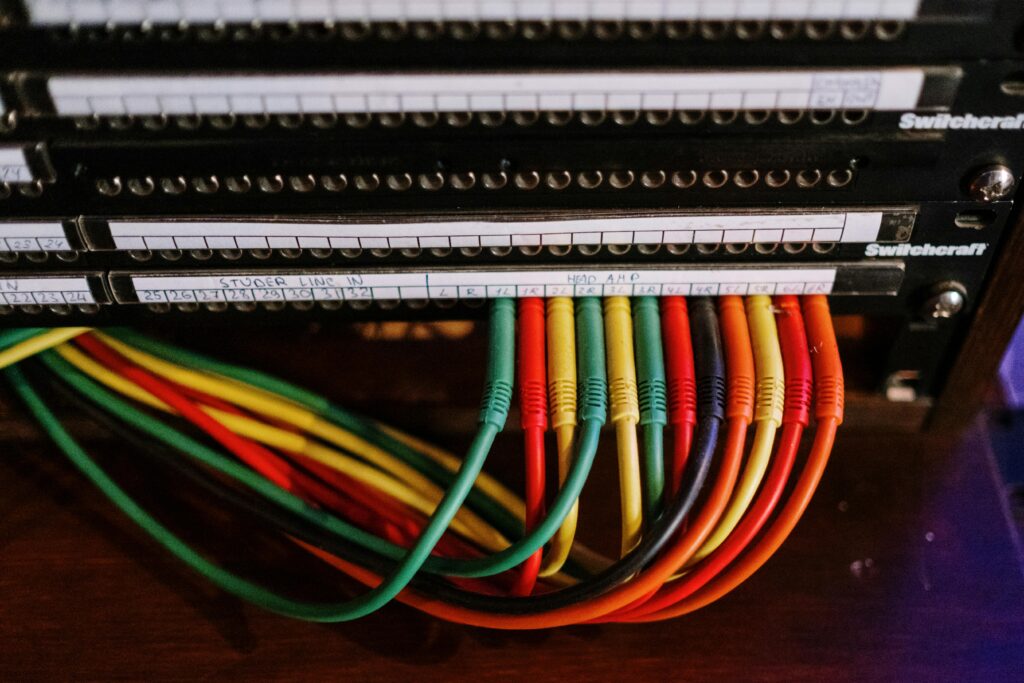As data centers play a vital role in the modern world, the need for faster and more efficient memory technologies is more important than ever. DDR RAM has been a staple in data centers for many years, but with the arrival of DDR5, many are wondering what kind of power advantages this new technology can bring.
In this blog, we’ll dive into the evolution of DDR RAM, explore its importance in data centers, and unravel the potential power advantages and switching potential between DDR4 vs DDR5. Discover the cutting-edge advancements in RAM technology driving the data center industry forward.
Understanding DDR4
DDR4 is the fourth generation and the current industry standard of Double Data Rate memory technology, which is used in computers for faster data transfer speeds. It boasts better performance and higher capacity than its predecessor, DDR3. DDR4 memory modules can range from 4GB to 16GB, allowing for a maximum system memory capacity of up to 128GB.
DDR4 also offers faster data transfer rates, with speeds ranging from 2133MHz to 4266MHz, which is more than double the speed of DDR3. In addition to its impressive features and specifications, DDR4 has proven a reliable option for data centers. Its improved performance allows for faster data processing, which can benefit businesses.
Introducing DDR5
As technology advances rapidly, the arrival of DDR5 certainly stands out as a game-changer. DDR5 promises to offer several key advancements and innovations expected to revolutionize data centers’ performance and efficiency. One of the most significant changes is the increase in bandwidth, which doubles the data rate of DDR4, providing up to 6.4 Gbps per pin. This means DDR5 can handle more data faster, improving productivity and processing times.
Additionally, DDR5 is being designed to be more power-efficient, which can translate into lower operating costs and reduced environmental impact. The expectations for DDR5 are undoubtedly high, and it will be exciting to see how this new generation of memory changes the data center landscape in the coming years.
Power Advantages of DDR5
One of the primary benefits of DDR5 is enhanced power efficiency, which is achieved through various design improvements such as lower voltage requirements and optimized power management. This results in a significant reduction in power consumption and heat dissipation, leading to potential energy savings for data centers.
The lower voltage requirement of DDR5 reduces the power consumption of individual memory modules. DDR5 requires only 1.1 volts, compared to the 1.2 volts needed by DDR4. It may sound like a minor change, but it can add up quickly in large-scale deployments with hundreds or thousands of memory modules.
Additionally, DDR5 has optimized power management features that allow it to conserve power when it’s not actively used. For example, DDR5 modules can be put into a “deep sleep” state when not in use, which helps reduce power consumption even further.
Lower power consumption also means less heat generation, critical for maintaining optimal operating temperatures within a data center. With DDR5, data center operators can expect lower cooling requirements, resulting in further cost savings.
DDR5’s Switching Potential
With hot swapping capabilities, DDR5 modules can be removed and replaced while the system is still running, allowing seamless upgrades and expansions without downtime. This level of flexibility and scalability is essential for businesses looking to stay ahead of the curve in today’s fast-paced technological environment. In addition, the ability to quickly upgrade, expand, or swap modules provide higher uptime, reducing the system’s dependency on scheduled maintenance. As DDR5 rapidly becomes more accessible and affordable, it’s clear that this technology is set to revolutionize data center operations.
Performance Comparison: DDR4 vs DDR5
Performance comparison between DDR4 and DDR5 memory technologies highlights significant improvements in speed, bandwidth, latency reduction, and enhanced responsiveness. DDR5 memory technology offers higher speed and bandwidth than DDR4, enabling faster data transfer rates and better performance in memory-intensive applications. Additionally, DDR5 memory technology reduces latency, leading to improved system responsiveness. A comparative analysis of real-world workloads reveals that DDR5 memory technology performs better than DDR4, especially in memory-intensive applications such as gaming, video editing, and scientific computing.
Compatibility Considerations
With new technologies come compatibility challenges, and that’s the case with DDR4 and DDR5. One challenge is the physical differences between DDR4 and DDR5 memory modules. For example, DDR5 memory modules have a different pin layout, making them incompatible with DDR4 motherboards. This means that upgrading to DDR5 will require a new motherboard.
Another challenge is ensuring that DDR5 memory is compatible with the other components in your system, such as the processor and chipset. To ensure compatibility, it is essential to research and purchase components that are certified for use with DDR5 memory.
Many strategies have been implemented to help smoothly transition to DDR5 and coexist with DDR4. These include ensuring backward compatibility by allowing for mixed usage of DDR4 and DDR5 modules, testing for interoperability early on, and providing ample time for adoption. With proper strategies in place, the transition to DDR5 can be achieved smoothly, allowing businesses to reap the benefits of better performance without disrupting their operations.
Cost Considerations
At present, DDR4 memory is more widely used and, therefore, available at a lower cost. The price of DDR4 memory can vary depending on factors such as capacity and speed but generally ranges from $20 to $200 per module.
On the other hand, DDR5 memory is still relatively new, and prices are not yet established. However, it is expected that DDR5 memory will be significantly more expensive than DDR4 memory, especially in the early stages of adoption.
While DDR5 may have a higher upfront cost, it may offer greater cost-effectiveness in the long run. DDR5 is expected to deliver better performance and capacity, which can help to improve overall system efficiency and reduce the need for future upgrades.
For data centers, the return on investment (ROI) of upgrading to DDR5 memory will depend on various factors, including the size and complexity of the data center, the applications being run, and the specific workloads being handled. However, the improved performance and capacity of DDR5 memory could offer significant benefits in terms of increased productivity, reduced downtime, and improved customer satisfaction.
Data Center Application Examples
DDR4 is the latest DRAM technology that offers optimized performance for Data Centers. In addition, DDR4 memory modules have enhanced error correction capabilities, making them less prone to data corruption. This feature is crucial in Data Centers, where data integrity is paramount.
While DDR4 is an improvement over earlier memory technologies, the next generation of memory – DDR5 – is already on the horizon. DDR5 is the next generation of DRAM technology, and it promises to bring even more significant improvements to Data Centers. Here are some potential benefits of upgrading to DDR5:
- Increased Bandwidth: DDR5 is expected to offer twice the bandwidth of DDR4. Data Centers can handle more data-intensive workloads like AI and machine learning.
- Improved Power Efficiency: DDR5 will consume less power than DDR4, which can lead to significant energy savings for Data Centers.
- Higher Density: DDR5 memory modules will have a higher density than DDR4, meaning they can store more data in a single module. This can lead to cost savings, as Data Centers can reduce the number of modules needed to store the same data.
- Advanced Error Correction: DDR5 will have advanced error correction capabilities, which means it can detect and correct errors more efficiently than DDR4. This is especially important in Data Centers, where data integrity is critical.
DDR5’s Impact on Data Center Infrastructure
DR5’s impact on data center infrastructure includes implications for server architecture, storage solutions, and network and interconnect considerations.
Regarding server architecture, DDR5 allows for higher memory bandwidth and capacity, meaning servers can process more data faster. This leads to more efficient data processing and reduced latency.
Regarding storage solutions, DDR5 enables faster access to data stored in RAM, speeding up processing times for applications that rely on large datasets. In addition, DDR5 also supports Non-Volatile Dual In-line Memory Modules (NVDIMMs), which combine the speed of RAM with the persistence of storage, making it ideal for applications that require both fast access and data durability.
Network and interconnect considerations are also impacted by DDR5. The increased memory bandwidth and capacity mean that networks and interconnects need to be capable of handling the increased traffic. Additionally, DDR5’s support for ECC memory can reduce the risk of data corruption during transmission.
Overcoming DDR5 Challenges in Data Centers
Data centers are facing new challenges with the introduction of DDR5 memory technology. The overriding challenge, however, is to transition data center staff so they can leverage DDR5 memory capabilities. To achieve that, training and transitioning all staff is the key. In addition, they need to overcome various issues, addressing power requirements, cooling, and adopting DDR5-compatible hardware and software.
This will boost the infrastructure’s performance and unlock efficiency and the ability to meet or potentially exceed growing customer demand. While DDR5 memory adoption may initially seem daunting, with the proper training and transitioning programs, data center staff can successfully integrate this new technology into their existing infrastructure.
DDR4 vs DDR5: Future Outlook
As technology rapidly advances, RAM has not been left behind. DDR4 and DDR5 are two of the most popular RAMs globally, and most tech gurus are wondering which will outdo the other. DDR4 is the existing technology, while DDR5 is the upcoming technology set to replace DDR4.
The long-awaited advancements of DDR5 include improved speed, capacity, and power efficiency. It is projected that DDR5 will gradually gain market penetration and eventually eclipse DDR4, and as computer technology rapidly advances beyond DDR5, newer technologies are expected to be developed. Therefore, it is essential to keep an eye on the horizon and anticipate future developments to stay on top of the tech game.
Conclusion
The switch to DDR5 is inevitable and brings significant power advantages for data centers. While the transition may bring some challenges, the benefits of increased speed, improved memory capacity, and reduced power consumption make it a worthwhile investment. As DDR5 becomes increasingly available, it is crucial to consider the potential advantages of making the switch in your IT equipment. And if you do decide to upgrade, remember to dispose of your old DDR4 memory properly. Exit Technologies offers an excellent option for selling your used IT equipment responsibly!





